Who's Gilda? I want to learn more from her. This cake is so delicious! Custard cream and coffee is my new favourite combination!
Sponge Cake with Custard Cream and Coffee Recipe (AKA Gilda's Cake)
Recipes > Italian Recipes > Italian Cake Recipes
In the bustling streets of Milan during the '70s, amidst the glitz and glamour of high fashion and fast cars, a culinary legend was in the making. Gilda Notaro, the youngest of seven children, rose from the ashes of an early family tragedy to become the culinary maestro of a renowned restaurant chain. It wasn't just her natural talent that set her apart but her origin story, a testament to resilience and passion.
In the backdrop of the '50s and '60s, with the loss of her mother casting a long shadow, young Gilda, with love and duty in her heart, took to the kitchen. She wasn't just cooking; she was weaving dreams, nurturing her family with every dish. By the time the '70s rolled around, she was leading the culinary brigade at her brother's restaurant chain, creating a mosaic of mouthwatering masterpieces that people talked about for days.
Though the wheel of fortune turned by the '80s, leading to the restaurant chain's decline, Gilda's spirit remained unbreakable. She gracefully transitioned from being a celebrated chef to a dedicated housewife, nourishing her four children with the same zeal. Many recipes bear her signature touch, a delicate fusion of tradition and innovation, but none as iconic as the Sponge Cake with Custard Cream and Coffee.
Known to many as Gilda's Cake, this dessert exemplifies her knack for taking the ordinary and making it extraordinary. The harmonious blend of airy sponge, rich custard, and invigorating coffee is a testament to Gilda's vision—always pushing boundaries, always elevating the experience.
Dive into this recipe and savor a piece of history, a slice of Gilda's legacy, and a taste of Milan's golden era.
JUMP TO:
INGREDIENTS:
Eggs: Ensure eggs are truly at room temperature. Cold eggs can result in a denser cake. If you forgot to take them out of the refrigerator ahead of time, place them in a bowl of warm water for 10-15 minutes to bring them to room temperature.
Potato Starch vs. Cornstarch: Potato starch offers a lighter, fluffier texture compared to cornstarch. However, cornstarch is a more common pantry ingredient and will work well as a substitute.
If using cornstarch instead of potato starch, the cake might be slightly denser but will still be delicious.
Milk in Custard Cream: Full-fat milk or whole milk is preferred for a richer and creamier custard. However, if you're looking for a lighter version, you can use 2% milk. Avoid using skim milk as it might not give the custard its desired consistency.
Vanilla Pod: If you don't have a vanilla pod, you can use 1-2 tsp of pure vanilla extract as a substitute. However, the pod gives a more authentic vanilla flavor.
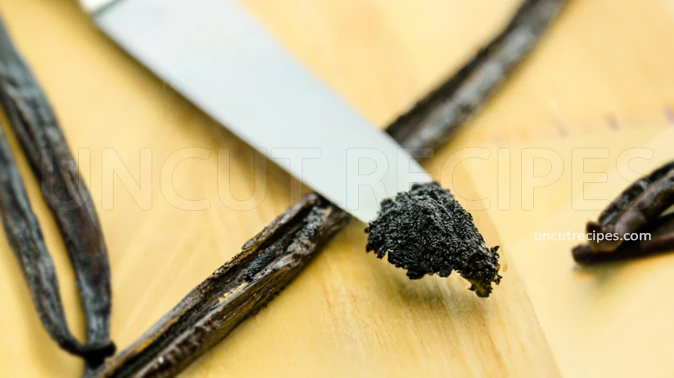
Coffee: The strength of the espresso will directly influence the coffee flavor in your cake. If you don't have an espresso machine, you can use strong brewed coffee as an alternative. Ensure the quantity is equivalent to 20 double shots of espresso.
MAIN STEPS:
Egg Handling, Crucial for Texture: Separating eggs can be a delicate task, especially if aiming for a consistent sponge cake texture. Ensure that no yolk gets mixed with the whites, as even a minute amount of yolk can inhibit the fluffiness you're aiming for with whisked egg whites. For easier separation, consider using cold eggs, but remember to let the separated components come to room temperature before proceeding.
Lemon Zest in Custard, Extraction Excellence: Infusing milk with lemon zest imparts a subtle flavor. However, it's essential not to boil the milk with the zest in it, as over-extraction can lead to a bitter aftertaste. Warm the milk just enough to extract the lemony essence without overpowering the custard.
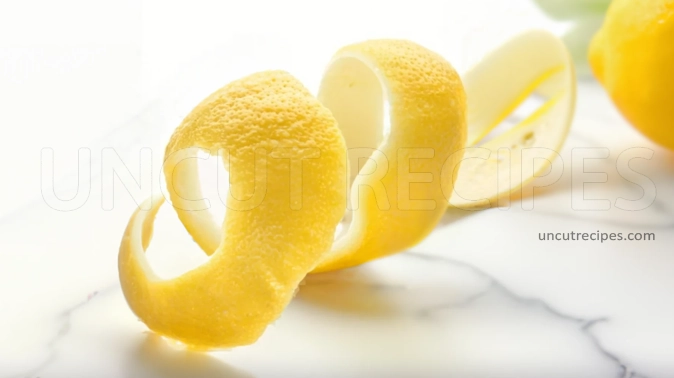
Custard Consistency, Patience is Key: Achieving the right custard consistency requires continuous stirring on gentle heat. Rapid or high heating can lead to curdling. Using a double boiler is an alternative method to ensure even, gentle heating. Remember, once the custard starts thickening, it will do so quite rapidly. Be vigilant to prevent it from becoming overly thick or lumpy.
Espresso Soaking, Balance is Essential: Over-soaking the sponge with espresso can result in a soggy cake. Conversely, under-soaking might leave the cake drier than desired. Use a spoon or brush for controlled drizzling, and let each drizzle absorb before adding more. If you find 20 double shots too potent, dilute with a bit of water or use fewer shots.
Refrigeration, All About Timing: While refrigerating the cake helps set the custard and melds the flavors, over-chilling might render the sponge cake too firm. If you aim to serve the cake many hours or a day later, consider adding the espresso closer to the serving time.
SERVED WITH:
Starter: Cappuccino of Wild Mushrooms (France): A creamy soup made from wild mushrooms, typically topped with frothy milk or cream, mimicking the appearance of a cappuccino. The earthy flavors of the mushrooms contrast beautifully with the sweet sponge cake.
Main Course: Espresso-Rubbed Steak (USA): A grilled steak seasoned with an espresso rub, which gives it a rich, dark crust. The deep flavors of the coffee-rubbed meat will resonate with the coffee notes in the cake.
Second Course: Coffee-Glazed Chicken (Mexico): Chicken pieces marinated and cooked in a glaze made from coffee, brown sugar, and other spices. The sweet and savory combination will juxtapose the sweetness of the sponge cake.
Salad: Rocket and Parmesan Salad (Italy): A light and peppery arugula salad topped with shavings of Parmesan cheese and a simple lemon vinaigrette. The freshness and tanginess of the salad can cleanse the palate before diving into the sponge cake.
ALTERNATIVES:
Dessert: Tiramisu' (Italy): A classic Italian dessert made of layers of coffee-soaked ladyfingers and mascarpone cheese, dusted with cocoa powder. The combination of creamy mascarpone and the coffee-soaked sponge is reminiscent of Gilda Notaro's Cake but offers a slightly tangier flavor profile.
Dessert: Coffee Flan (Mexico): A creamy custard dessert infused with rich coffee and topped with caramel sauce. This dish combines the custard-like texture of Gilda Notaro's cake with the unmistakable essence of coffee.
Cake: Opera Cake (France): A French cake made from layers of almond sponge cake soaked in coffee syrup, layered with ganache and coffee buttercream, and topped with a chocolate glaze. It's a multi-layered dessert that offers a harmonious blend of almond, coffee, and chocolate.
Dessert: Espresso Panna Cotta (Italy): A silky pudding inspired by the popular coffee drink, made with milk, coffee, and Cream. This dessert captures the essence of a creamy Espresso in a spoonable form.
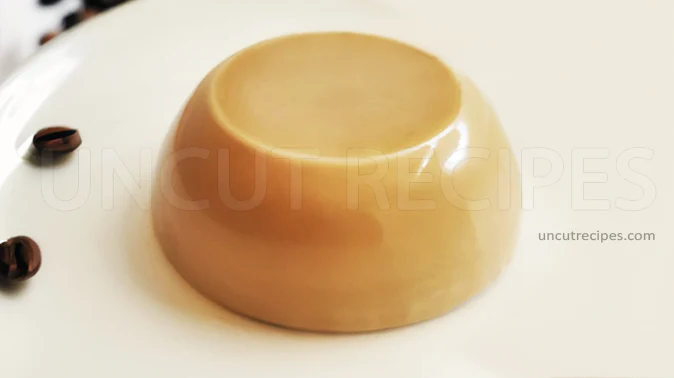
Dessert: Egg Coffee (Vietnam): A Vietnamese drink where a creamy, frothy egg yolk mixture is placed atop hot coffee. It's both a drink and a dessert, with the rich taste of egg complementing the bitter notes of the coffee.
Dessert: Boston Cream Pie (USA): Despite its name, it's a cake – with two layers of sponge cake filled with creamy custard and topped with a chocolate glaze. The custard filling and the soft sponge resonate with the textures of Gilda Notaro's Cake.
Dessert: Coffee Jelly (Japan): A popular Japanese dessert made from coffee and agar, often served with cream. The juxtaposition of the jiggly coffee jelly and the smooth cream makes it a refreshing dessert with a pronounced coffee flavor.
HISTORY:
Italian Sponge Cake
The origins of the sponge cake trace back to the Renaissance era, particularly in Spain and Italy. It's believed the cake was so named because of its sponge-like texture, achieved by whipping eggs to incorporate as much air as possible.
As explorations and trade flourished, the basic sponge cake recipe journeyed across Europe. By the 18th century, it found its way to England, where it was embraced and modified, leading to the birth of the Victoria Sponge, a cake named in honor of Queen Victoria, who enjoyed it with her afternoon tea.
Italian Custard Cream
Custard has roots in ancient Rome, where it was originally a kind of pie filling made of eggs and honey, sometimes combined with milk. Over the centuries, as culinary techniques advanced and ingredients became more available, custard evolved into a dessert in its own right, particularly in European cuisine.
The transformation of custard from a simple Roman dish to a silky, creamy dessert can be credited to advancements in cooking equipment and techniques. The introduction of vanilla from the New World gave custard a new aromatic depth. In England and France, custard became especially popular, often used as a filling or topping for pastries, tarts, and cakes.
The Union, Gilda's Cake:
Among Gilda's myriad creations, the Sponge Cake with Custard Cream and Coffee was the pièce de résistance. While sponge cake, custard cream, and coffee were staples in many Italian kitchens, it was Gilda's unique approach that made her version legendary.
She was known to say that this cake was her attempt at encapsulating her life's journey—a soft sponge to signify the ups and downs, a rich custard to represent the sweetness amidst life's challenges, and the coffee, a nod to her undying spirit and zest for life.
Gilda's Cake wasn't just another dessert on the menu. It was a slice of history, an embodiment of Milan's spirit during its golden era. Those who tasted it didn't just praise its flavor profile; they reminisced about the era it represented. The cake became synonymous with Gilda's resilience, passion, and dedication, making it a culinary legend in Milan's high society.
TIPS:
Flavor Extraction: Opt to infuse flavors longer for deeper notes. For example, using Madagascar vanilla beans instead of extract can give a richer vanilla flavor to the sponge cake.
Italian Meringue Technique for Sponge Cake: It yields a more stable sponge cake with finer crumb and enhanced moisture.
Method: Instead of just whisking egg whites and sugar, make an Italian meringue by boiling a sugar syrup (2 parts sugar to 1 part water) to 240°F (115°C). Slowly pour this into whipping egg whites until glossy peaks form. This meringue is then folded into the yolk mixture.
Infusion Technique for Custard: This will extract more flavor from the vanilla, offering a richer custard.
Method: Split the vanilla pod lengthwise and scrape out the seeds. Add both the seeds and the pod to the milk during the warming process.
Sponge Brushing Technique: Ensures each bite has a balanced coffee flavor, preventing some parts from becoming too soggy or dry.
Method: Use a pastry brush to apply espresso onto the sponge cake layers. This allows for a more controlled and even distribution of the coffee.
Recipe Information
Skill Level
|
Time 3 Hours |
Price
|
Serves 8 People |
| Healthiness |
Nutritional Information |
| Ratings (Add Rating & Review) |
Reviews 15 Reviews |
Ingredients:
-
5 Eggs
( at room temperature )
0.75 cup Sugar
0.66 cup Flour
0.66 cup Potato Starch
( or cornstarch )
1 teaspoon Vanilla Extract
Salt
( just a pinch )
For the Custard Cream:
2 cups Milk
( check Notes )
4 Egg Yolks
0.66 cup Sugar
0.5 cup Cornstarch
( or any other starch you may fancy )
1 Lemon Zest
( small pieces or grated )
1 Vanilla Pod
For the Coffee:
20 Double Shot Espresso Coffee
Allergens
| Dairy | Eggs | Gluten | Corn |
Directions:
For the Sponge Cake:
01 - Prehear your oven to 180C / 350F. Get it ready for baking.
02 - To prep your cake pan with butter and flour, start by taking a small amount of softened butter on a piece of kitchen paper or a soft brush. Spread the butter generously all over the interior surface of the pan, making sure every nook and cranny is covered. This helps in preventing the cake from sticking. Once buttered, sprinkle some flour into the pan. Tilt and rotate the pan so that the flour covers the buttered surface. This creates a non-stick barrier between the pan and the cake batter. Tap out any excess flour over your sink or trash can. Your pan is now ready to receive the batter!
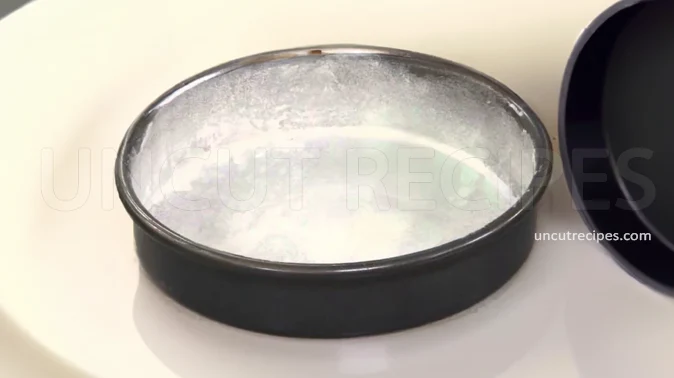
03 - Carefully separate the Egg Yolks from the Egg Whites. You'll have to use two different bowls to do this.
04 - With an electric mixer in hand, whisk together the Egg Whites, Salt, and one-third of the Sugar. Aim for a creamy texture, avoiding any foaminess.
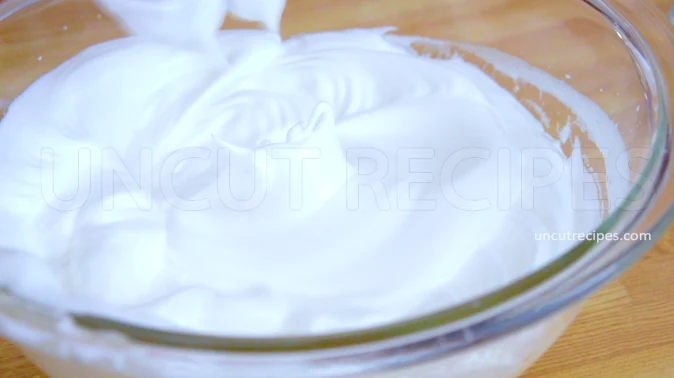
05 - In another bowl, blend together the Egg Yolks, Vanilla, and the remaining Sugar. Mix until you achieve a smooth, creamy consistency.
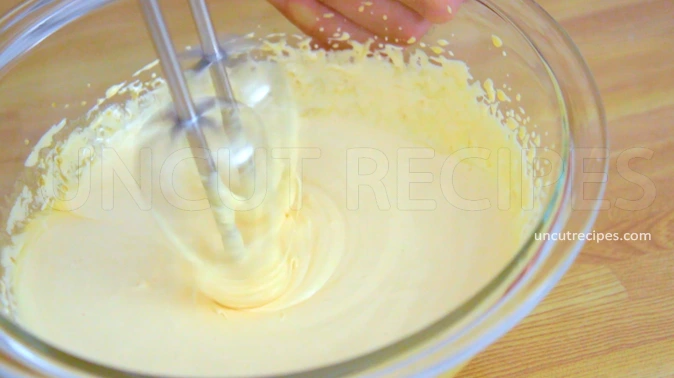
06 - Now, combine the contents of the two bowls. Keep mixing until the mixture looks pale, feels creamy, and appears to have doubled in volume.
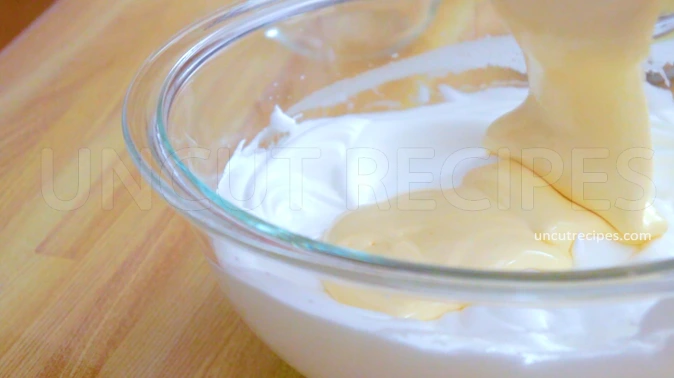
07 - Gently fold in the Flour and Starch to the mixture, ensuring a lump-free and smooth batter.
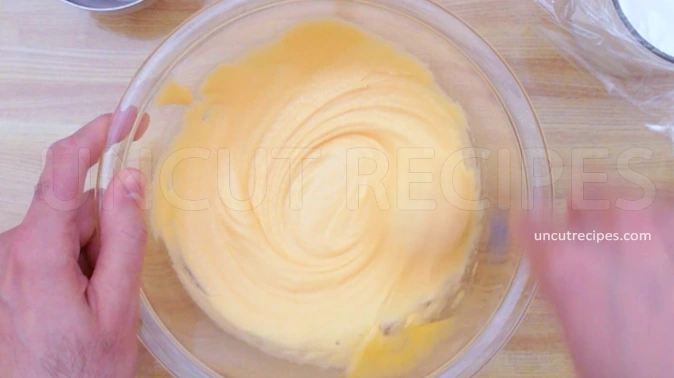
08 - Carefully pour this Batter into the cake pan that has been prepped with Butter and Flour in STEP 02.
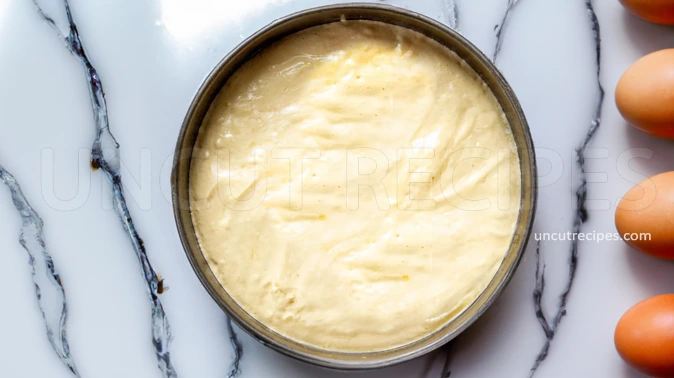
09 - Place the Cake pan in the preheated oven and bake for 30-40 minutes.
10 - Once baked, let the Sponge Cake cool slightly in its pan. Afterwards, transfer it to an oven rack, ensuring it cools down entirely without trapping any moisture.
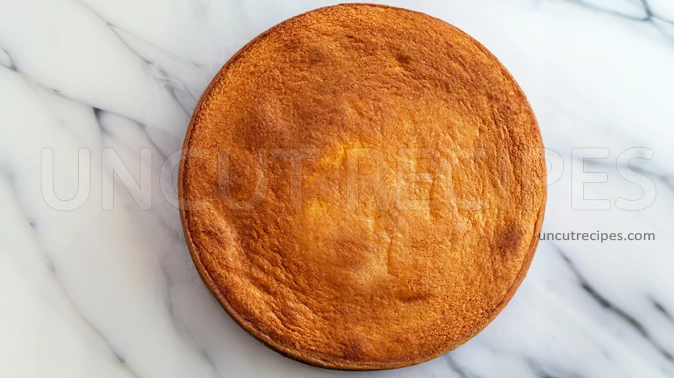
For the Custard Cream:
11 - In a bowl, mix together the Egg Yolks, Sugar, a little bit of Cornstarch, and Vanilla. Stir it well and then set it aside for a bit.
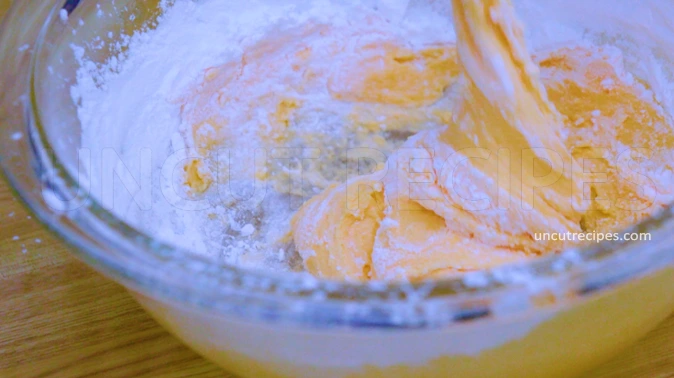
12 - In a pot, warm up half of the Milk with the Lemon Zest. Let it heat up just short of boiling for a few minutes.
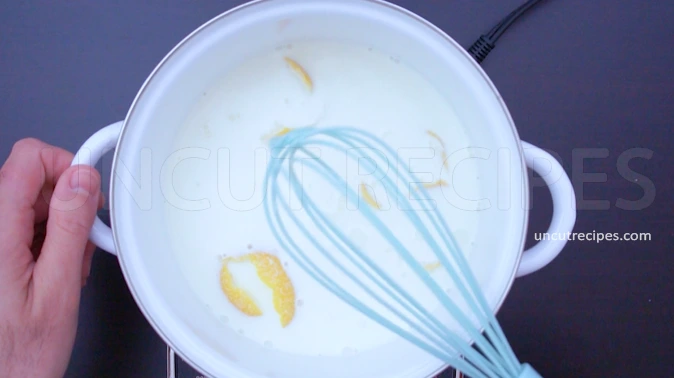
13 - Switch off the stove, letting the Milk cool down a little, absorbing the lovely scent of the Lemon Zest.
14 - To your set-aside Egg mix, whisk in the remaining Cornstarch. Slowly pour in a small amount of the lukewarm Milk, ensuring a lump-free blend.
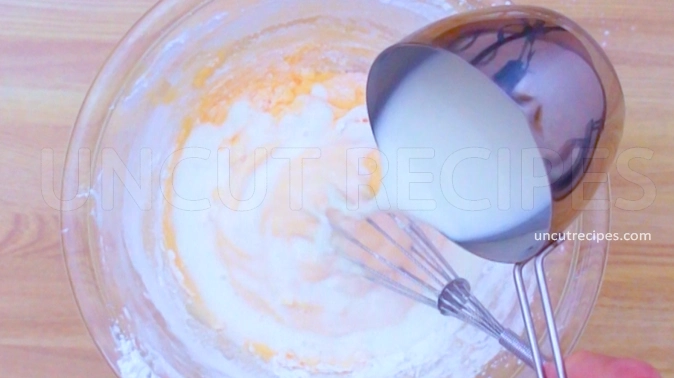
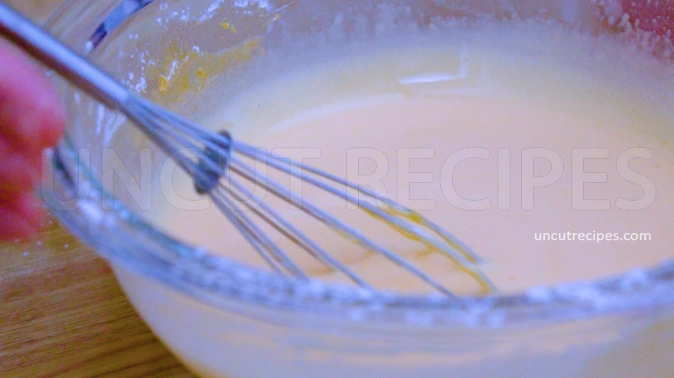
15 - Take out and discard the Lemon Zest from the Milk.
16 - Now, combine your Egg Yolk mixture with the Milk.
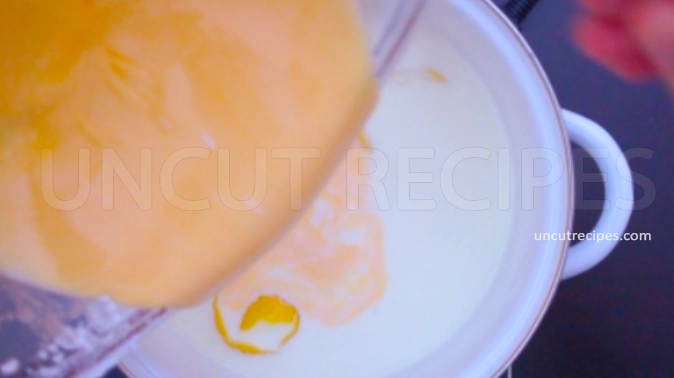
17 - On a gentle heat, cook this mix until you have a thick Custard. Keep stirring continuously for around 5-10 minutes to achieve the perfect consistency.
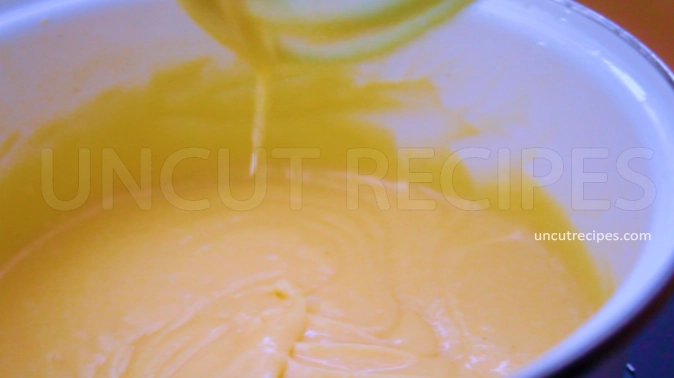
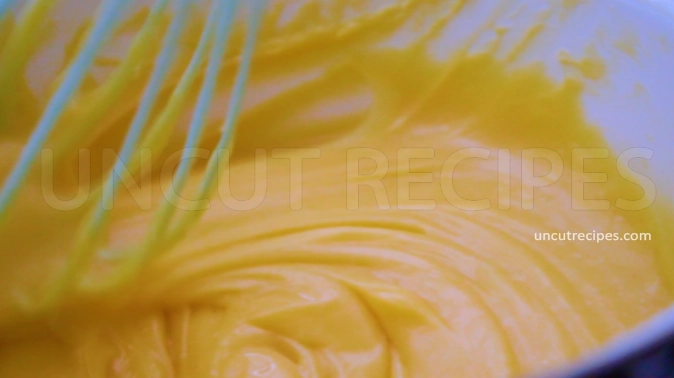
18 - Transfer the Custard to a bowl and cover it with cling film. Let it cool at room temperature before refrigerating for an additional hour.
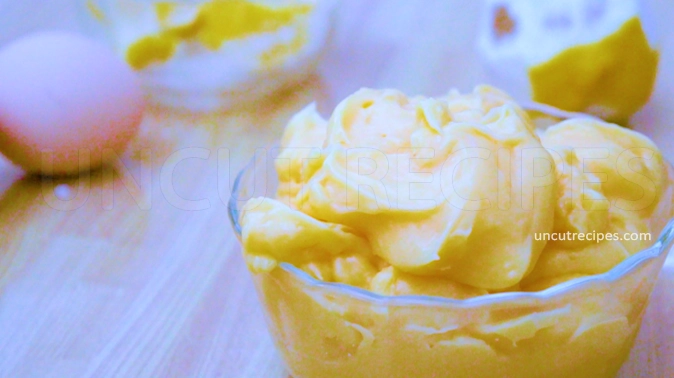
19 - Now that your Custard Cream is ready, it's time to prepare around 20 double espresso shots, and don't forget to allow them to chill in the fridge.
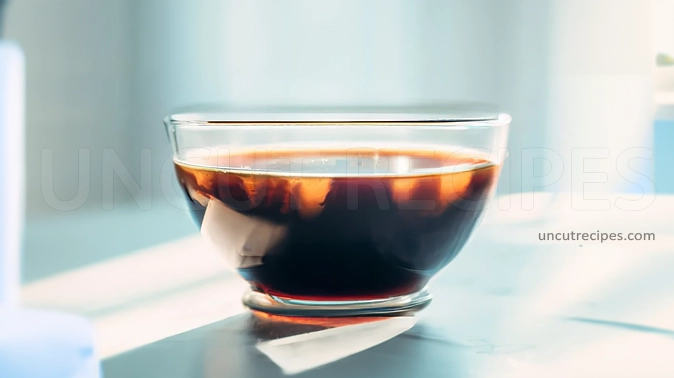
Assembling the Cake:
20 - Slice your cooled Sponge Cake horizontally.
21 - Using a spoon, drizzle the chilled espresso over both cake halves, ensuring they soak up the coffee.
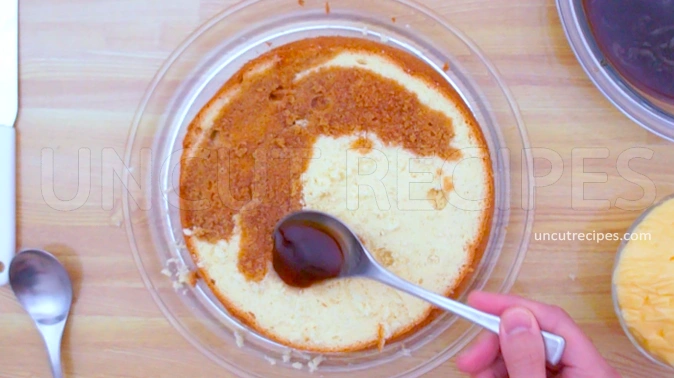
22 - Generously spread the chilled Custard Cream over the bottom half of the cake.
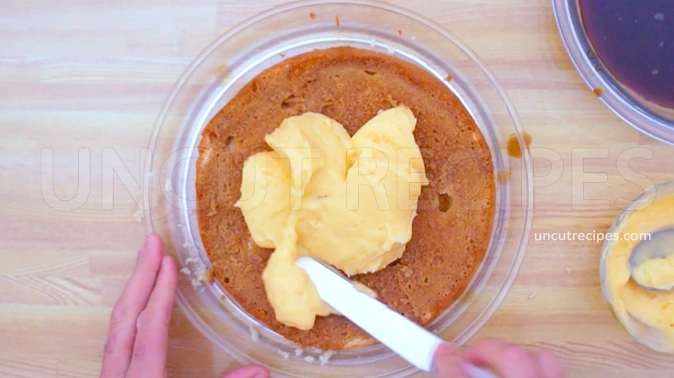
23 - Place the top half over it, creating a delightful sandwich.
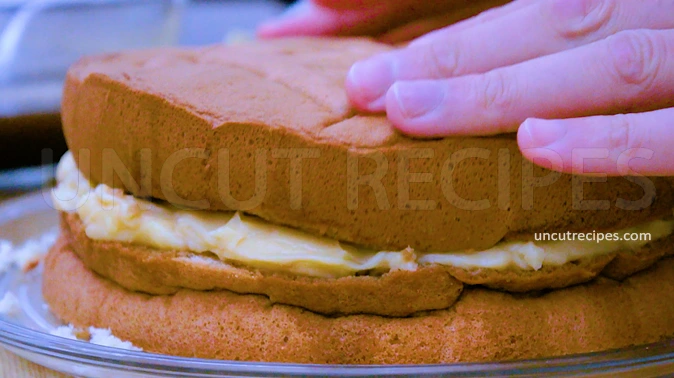
24 - You can either leave your cake as is or adorn it with whipped cream. For the best taste, refrigerate the cake for at least 2 hours before serving. Always serve it chilled and enjoy!
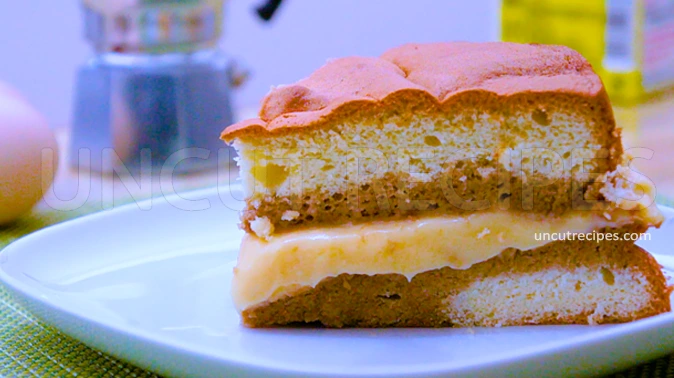
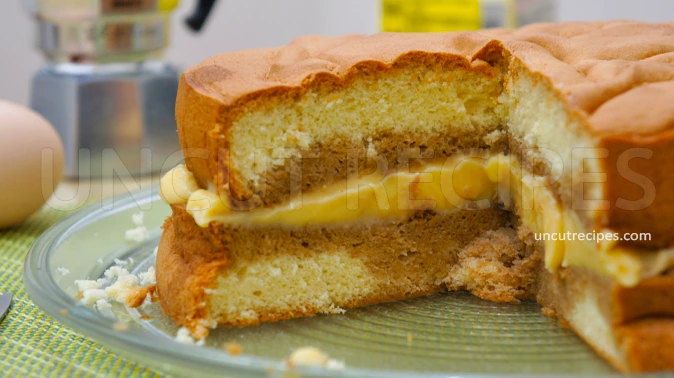
Notes:
Storing: Once assembled, it's essential to refrigerate the cake to let all the flavors meld and to ensure the custard cream sets properly. If you're storing it for an extended period, cover the cake with cling film to avoid it absorbing any other odors from the fridge.
This cake is best consumed within 2-3 days for optimal freshness. If stored correctly, it can last up to 5 days in the refrigerator.
Serving: Before serving, you can dust the top with a sprinkle of cocoa powder or grated chocolate for added aesthetics and flavor, or adorn it with whipped cream.
Nutritional Information
( Per Portion )
|
Calories |
210 kcal (10.5%) |
| Total Carbohydrate | 40g (13.3%) |
| Cholesterol | 110mg (36.7%) |
|
Total Fat |
5g (7.7%) |
| Saturated Fat | 1.5g (7.5%) |
| Polyunsaturated Fat | 1g (6.7%) |
| Monounsaturated Fat | 2g (13.3%) |
| Trans Fat | 0g (0%) |
| Fibers | 0.5g (2%) |
| Protein | 6g (80%) |
| Sugar | 20g (80%) |
|
Vitamin A |
300 IU (6%) |
|
Vitamin B1 (Thiamin) |
0.1mg (6.7%) |
| Vitamin B2 (Riboflavin) | 0.2mg (15.4%) |
| Vitamin B3 (Niacin) | 1mg (6.25%) |
| Vitamin B5 (Pantothenic Acid) | 1mg (20%) |
| Vitamin B6 | 0.1mg (7.7%) |
| Vitamin B7 (Biotin) | 5mcg (16.7%) |
| Vitamin B9 (Folate) | 20mcg (5%) |
| Vitamin B12 | 0.5mcg (20.8%) |
| Vitamin C | 1mg (1.1%) |
| Vitamin D | 10 IU (2.5%) |
| Vitamin E | 1mg (6.7%) |
| Vitamin K | 1mcg (1.25%) |
| Choline | 50mg (9.1%) |
| Carnitine | 10mg |
|
Calcium |
100mg (10%) |
|
Chloride |
100mg (4.2%) |
| Chromium | 5mcg (14.3%) |
| Copper | 0.1mg (11.1%) |
| Fluoride | 0.05mcg (1.8%) |
| Iodine | 10mcg (6.7%) |
| Iron | 1mg (5..6%) |
| Magnesium | 20mg (4.8%) |
| Manganese | 0.2mg (8.7%) |
| Molybdenum | 5mcg (11.1%) |
| Phosphorus | 100mg (14.3%) |
| Potassium | 150mg (3.2%) |
| Selenium | 10mcg (18.2%) |
| Sodium | 100mg (4.3%) |
| Sulfur | 100mg |
| Zink | 0.5mg (4.5%) |
* Percent Daily Values are based on a 2,000 calorie diet. Your daily values may be higher or lower depending on your calorie needs.
** Nutrient information is available for all ingredients in this recipe. Amount is based on available nutrient data collected from all over the internet.
(-) Information is not currently available for this nutrient. If you are following a medically restrictive diet, please consult your doctor or registered dietitian before preparing this recipe for personal consumption. |
| Written by: Uncut Recipes | Disclaimer |



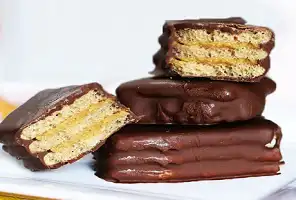
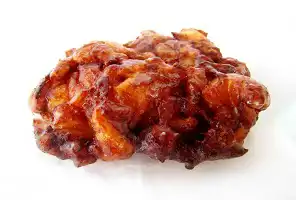

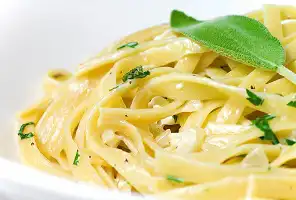
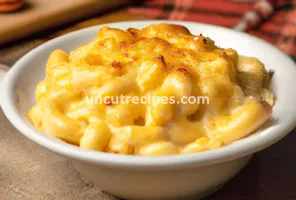


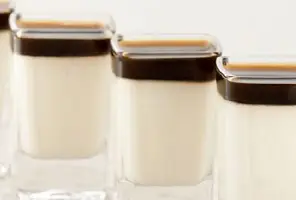
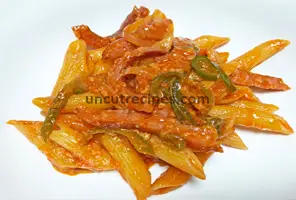

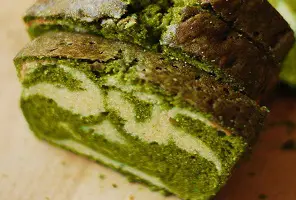
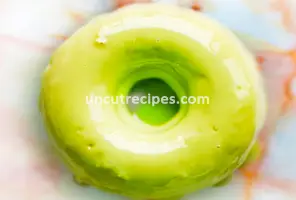



September 25, 2023
This cake wasn't easy to make but the final result is spectacular. I'm shocked noone has ever come out with this amazing idea! Loved it!